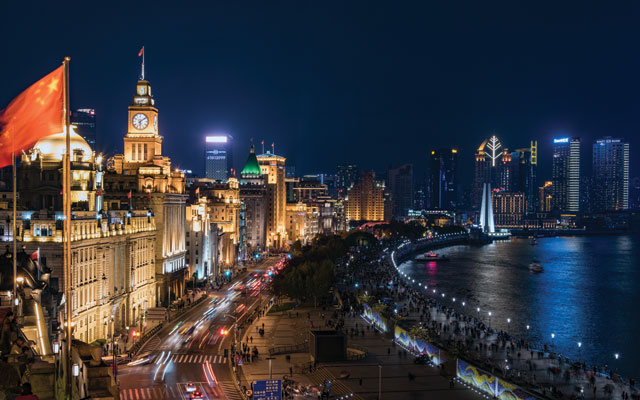Shanghai and Beijing are going strong with global association meetings, aided by new hardware and improved international air access, but their sister cities are taking strategic moves to also win on the associations front

For the last 10 years, Beijing and Shanghai have remained China’s top two cities that meet ICCA’s international association meetings criteria, with the latest figures from 2017 (2018 results will only be released in May 2019) revealing the cities garnered 81 and 61 events respectively.

Noor Ahmad Hamid, ICCA regional director, Asia-Pacific, shared: “Beijing and Shanghai are the top-two meetings destinations for a few obvious reasons. They are first-tier cities with the highest connectivity, they are where many Chinese national associations are located, and both have great meeting facilities.”
ICCA’s top official in the region however, pointed out that other Chinese cities are becoming more aggressive and strategic to attract international associations.
“Some have embarked on their own congress ambassador incentive programmes to attract international associations with strategic promotional campaigns. And while I can’t single out any cities in particular, many of the second- and third-tier cities are working hard to win in this space,” Noor noted.
Meanwhile, Patrick Chen, deputy director International Promotion Department, Shanghai Municipal Tourism Administration, said the international associations sector for the city has remained “stable for the last two years” as meetings were confirmed three to five years in advance.
Chen commented: “International technology and medical association meetings are strong and corporate meetings – up to 3Q2018 – have increased.”
He attributed the good results to developments such as the September launch of the daily Hong Kong-Shanghai high-speed rail service, the introduction of direct flights such as the Atlanta-Shanghai flights, and the increase in the number of countries (from 51 to 53) with visa-free entry privileges.
“For 2019, the outlook will depend on China’s economic development but growth for international association meetings should continue to be stable,” he forecasted.
Meanwhile, Kin Qin, deputy general manager, Century Holiday International Travel Group, said the continued increase in air capacity and hotel inventory in Shanghai has made the city a popular destination.
“There are a lot of air access choices to Shanghai and the supply of new hotels has been increasing over the last two years,” Qin said.
Industry observers further added that new developments such as the opening of the Shanghai EDITION hotel with nine different F&B venues, and Columbia Circle – a revived historical area with numerous F&B concepts with lots of event potential – are enhancing the city’s appeal as a meetings destination.
Another example is the newly renovated and extended Shanghai History Museum, which now contains a 9,800m2 exhibition area, with around 1,100 artefacts on display.
Julien Delerue, founder and CEO, 1000meetings, an RFP technology platform, observed strong room demand in Shanghai and rising hotels rates, which he said was a sign that the market was doing well.
Qin continued: “Our company handled ground arrangements for a 160-delegate European medical association meeting in Beijing in 2017, and while Beijing is more attractive for pre- or post-meeting sightseeing programmes, the easy access from Shanghai to nearby Suzhou and Hangzhou via high-speed rail provides new pre-/post-event options.”
Among international carriers, Delta Air Lines’ route expansion is most promising for China’s association meetings growth. Delta launched a non-stop daily service between Shanghai Pudong International Airport and the Hartsfield-Jackson Atlanta International Airport in July 2018, linking China’s business centre and the airline’s US hub, which offers more than 1,000 departures a day.
Wong Hong, president of Delta, Greater China, noted that the new service complements Delta’s existing direct flights between Shanghai and Detroit, Seattle and Los Angeles.
“Together with two non-stop daily flights from Beijing to Detroit and Seattle, Delta now operates 42 departures per week between the two countries,” he added.
In January 2018, Delta introduced its new aircraft, the Airbus A350-900 from Beijing to Detroit, the first airline to operate the A350 on China-US flights. The A350 also started to serve the Shanghai (Pudong)-Detroit route and the Shanghai (Pudong)-Los Angles route in April and July respectively.
“With the launch of the Shanghai-Atlanta service and the new aircraft A350 serving half of Delta’s China-US routes, Delta’s capacity in the China-US aviation market has seen 23 per cent year-on-year growth,” Wong stated.
Affirming the positive market sentiment, Violet Wang, destination manager, Pacific World China, shared that most hotels in the country “are really optimistic at least until the end of 2019”. The DMC has strong partnerships with China’s five-star hotels.
Apart from Beijing and Shanghai, industry observers also commented that the opening of the Hong Kong-Zuhai-Macau Bridge in 3Q2018, and the upcoming opening of the US$3.9 billion mega Shenzhen International Convention and Exhibition Center in September, are both expected to spur business and growth opportunities.
Qin, who is based in Shenzhen, is hopeful the 1Q2018 merger of Ministry of Culture and the China National Tourism Administration to become the Ministry of Culture and Tourism would result in dialogue between government and the industry on policy and regulations and spur growth of China’s inbound events industry.












